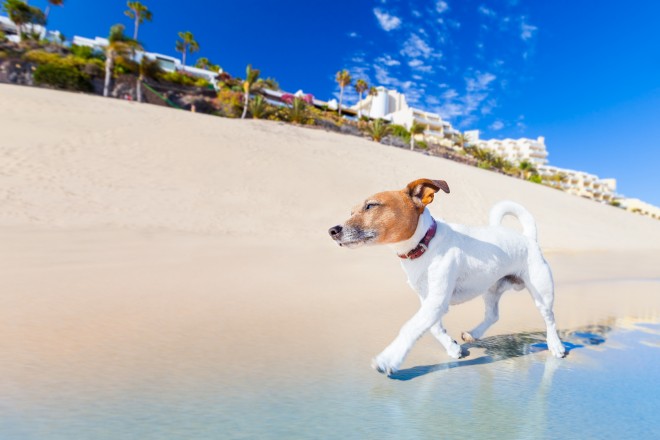

If you’ve ever joined a gym and gone through their induction process, or taken part in sports or activities with a trainer, no doubt they have made you aware of the importance of warming up before you start to exercise hard. The chances are that they will also have taught you about cooling down towards the end of your exercise session, and some of the tricks and tips that can help you to make the most of your workout without feeling sore or dehydrated in the aftermath.
However, something that even fit and active dog owners often overlook is how important it is that they enable their dogs to cool down and loosen off after exercise and activity too, and this is something that we will look at in more detail within this article. Read on to learn more about how to cool your dog down and relax them towards the end of their walk or play.
Good hydration when exercising is vital, as you can lose a lot of fluid when pushing your body! This is especially true for your dog, who is likely to be working harder than you, all while wearing a fur coat! Hydration helps the muscles to work effectively, supports swift reflexes and enables the body to flush out toxins, and so water provision should be an integral part of exercise for your dog, before, during and after.
Carry water with you when walking your dog, and offer them a drink now and then. Don’t offer cold or chilled water, or allow your dog to gulp down a huge amount of water while they are still hot and panting, as this can lead to stomach pain and bloating.
After your dog’s walk, offer them water again, but wait until they are cool and relaxed before giving them free rein to drink as much as they want.
Cooling down should take place in the last quarter of your dog’s exercise period, and cooling down allows the body temperature and heart rate to return to a resting state, as well as loosening off muscles that have worked hard. Towards the end of the walk, encourage your dog to calm down and lessen off the pace, bringing games and high impact play to an end, with the last ten minutes or so of the walk being taken at a gentle walking pace.
Once you get home, you may wish to give your dog a rub down or even stretch their legs for them to help their muscles to relax, and to improve circulation.
If your dog is physically hot when you get home, soak a towel in some cool (not cold) water and wrap it around your dog until they become cooler and more relaxed.
When you get back from your walk, it is likely that both your mind and your dog’s mind will turn to food, to replace some of the calories and energy expended during the walk. However, do not feed your dog as soon as you get back inside, as this can lead to stomach aches and even an increased risk of bloat or GDV. Once your dog is totally cool and relaxed, offer them water, and then a short while after, give them their meal.
It is a good idea to get into a routine of giving your dog a physical check over every time you get back in from a walk, as part of your routine of settling your dog down again. Run your fingers over the coat, including the legs and under the belly, to check for knots and thorns and other debris that you can remove. It is also wise to keep a watchful eye out to make sure that your dog has not picked up a tick, and to know how to remove it if they have!
One important place to check over on the dog, but which is often overlooked, is the paws themselves. High impact activity, walking on hard or rough surfaces and being out in the undergrowth can all take their toll on your dog’s feet, and so you should familiarise yourself with the normal state of your dog’s paws, and know how to identify problems like burns from hot ground, sores or cracks.
You should also check between the toes to make sure that debris such as grass seeds have not become lodged in the feet, as these can lead to lameness and abscesses if they work their way under the skin.
Take a little time to take care of your dog when coming back from your walks, and when you first get back inside, and your dog will be able to cool down faster and in greater comfort than they would otherwise be able to.
Copyright © 2005-2016 Pet Information All Rights Reserved
Contact us: www162date@outlook.com